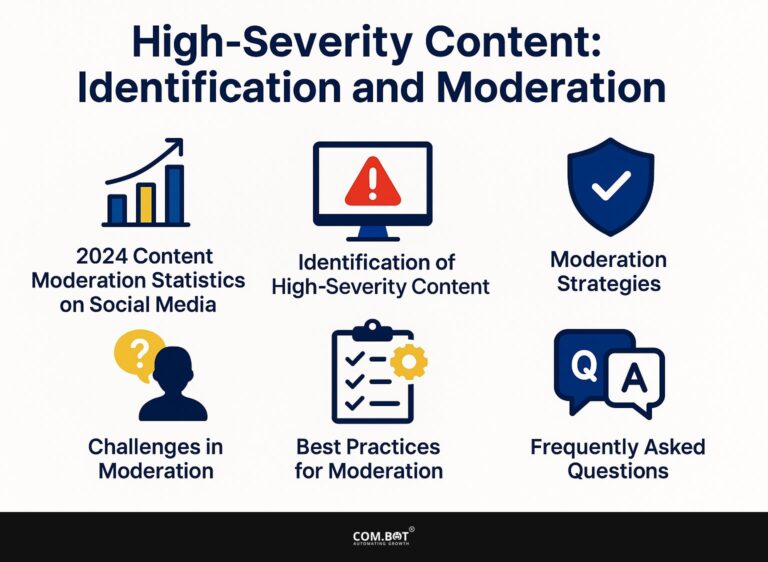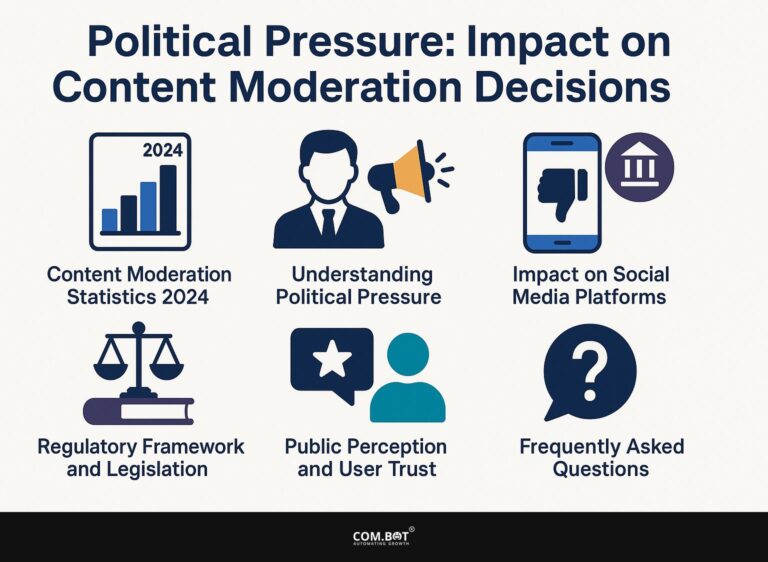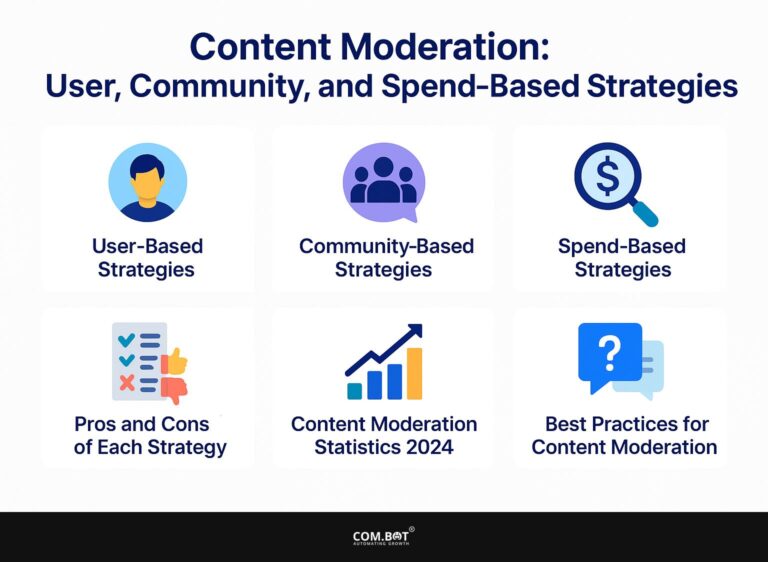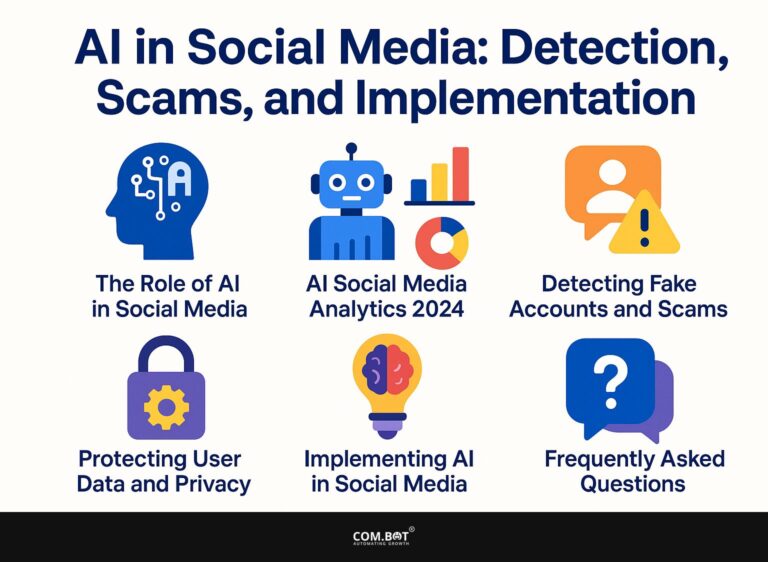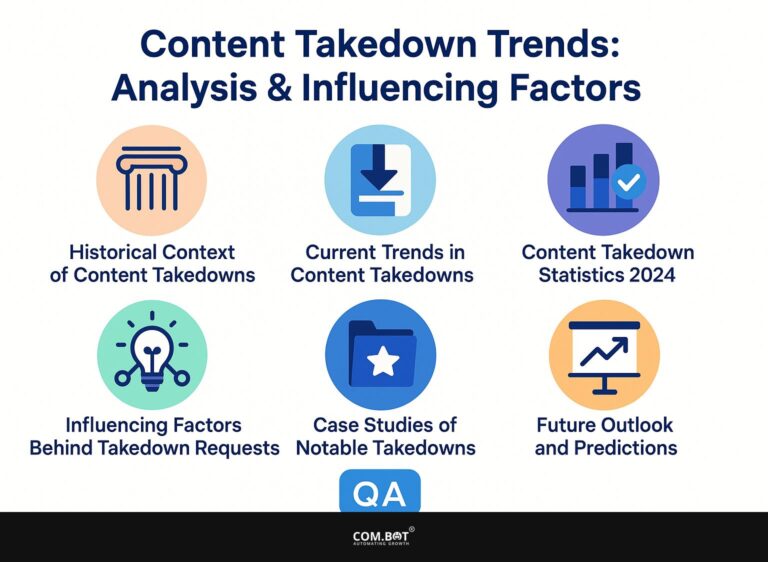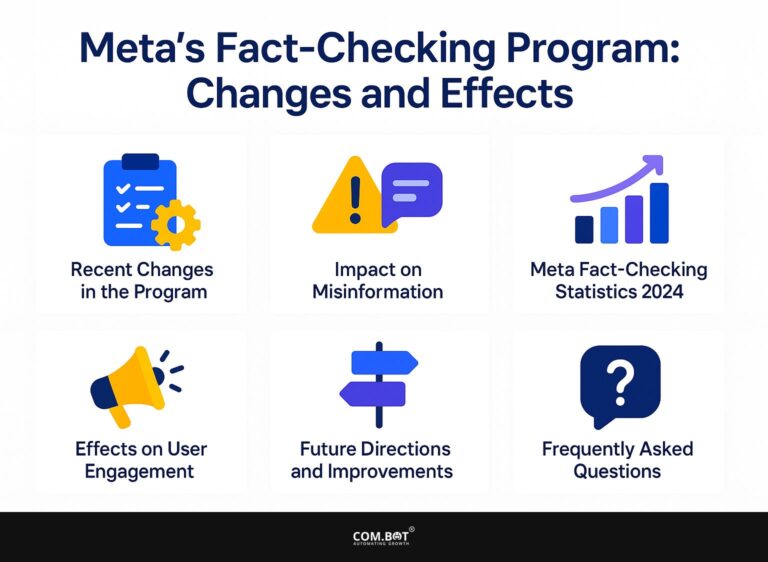Crowdsourced Verification in Content Moderation: Efficacy and Use
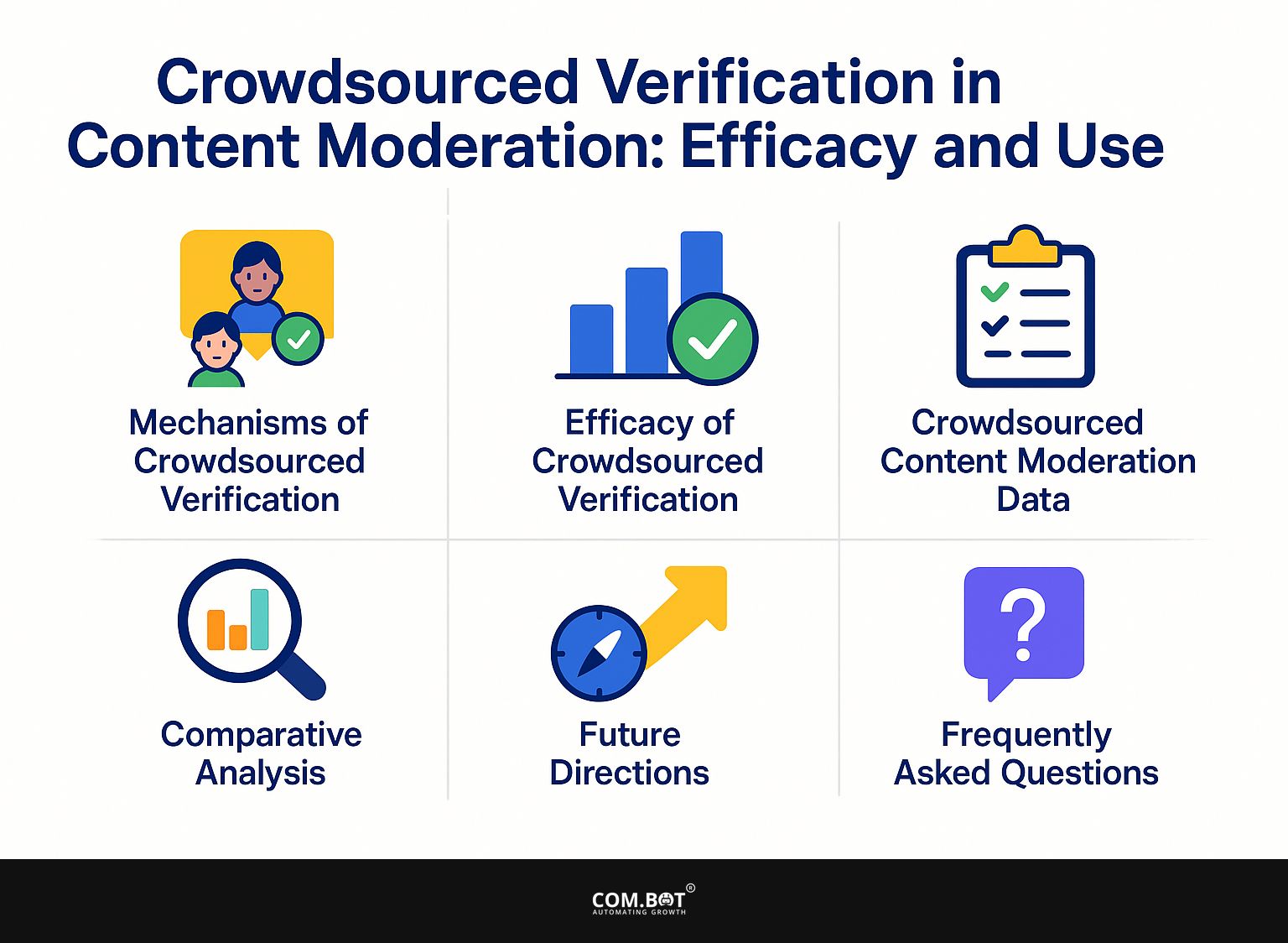
In an era where misinformation spreads like wildfire, crowdsourcing has emerged as a powerful tool for content moderation. Platforms like Facebook and Twitter are using user checks to improve the accuracy of content made by users.
In this article, we’ll look at how well crowdsourced verification works by reviewing its achievements and difficulties, and discussing its role in fighting false information. Learn how involving communities can change content moderation from being reactive to being ahead of issues.
Key Takeaways:
- Crowdsourced verification helps with content moderation by using a wide range of people to tackle problems like false information and offensive language.
- Despite success stories, crowdsourced verification faces challenges such as bias and scalability, and its impact on user trust must be carefully considered.
- The progress of crowdsourced verification depends on new technologies and ethical rules, as it changes and influences how online content is managed.
- 1 Mechanisms of Crowdsourced Verification
- 2 Efficacy of Crowdsourced Verification
- 3 Crowdsourced Content Moderation Data
- 4 Comparative Analysis
- 5 Future Directions
- 6 Frequently Asked Questions
- 6.1 1. What is crowdsourced verification in content moderation?
- 6.2 2. How does crowdsourced verification work?
- 6.3 3. What is the efficacy of crowdsourced verification in content moderation?
- 6.4 4. What are the benefits of using crowdsourced verification in content moderation?
- 6.5 5. Are there any risks associated with crowdsourced verification?
- 6.6 6. How common is the use of crowdsourced verification in content moderation?
1. Definition and Importance
Crowdsourced verification is when a group of users checks information together, which greatly increases correctness. This method plays an important role in fighting false information, especially on platforms such as Twitter and Facebook.
People can use tools like CrowdTangle to quickly track how content is shared and spot any false stories. Platforms like Wikipedia use this method by letting users edit and check entries.
Setting rules for user input is important; for instance, asking users to mention trustworthy sources can improve the trustworthiness of confirmed content. This shared responsibility encourages active efforts to correct mistakes in online content.
2. Historical Context
The idea of using the public to verify information started in the early 2000s and grew as social media platforms such as Facebook and Twitter became popular.
Platforms quickly integrated user-driven verification systems to combat misinformation. For example, Facebook introduced the fact-checking feature in 2016, allowing users to flag dubious content.
Similarly, Twitter launched its Birdwatch program, encouraging users to add context to tweets. These projects depend a lot on people from the community, making it possible for users to keep the information accurate.
The integration has improved accountability and encouraged users to think critically. This makes it important for people involved in digital communication to know and use these tools well.
Mechanisms of Crowdsourced Verification
Crowdsourced verification works by getting people involved to check and confirm information.
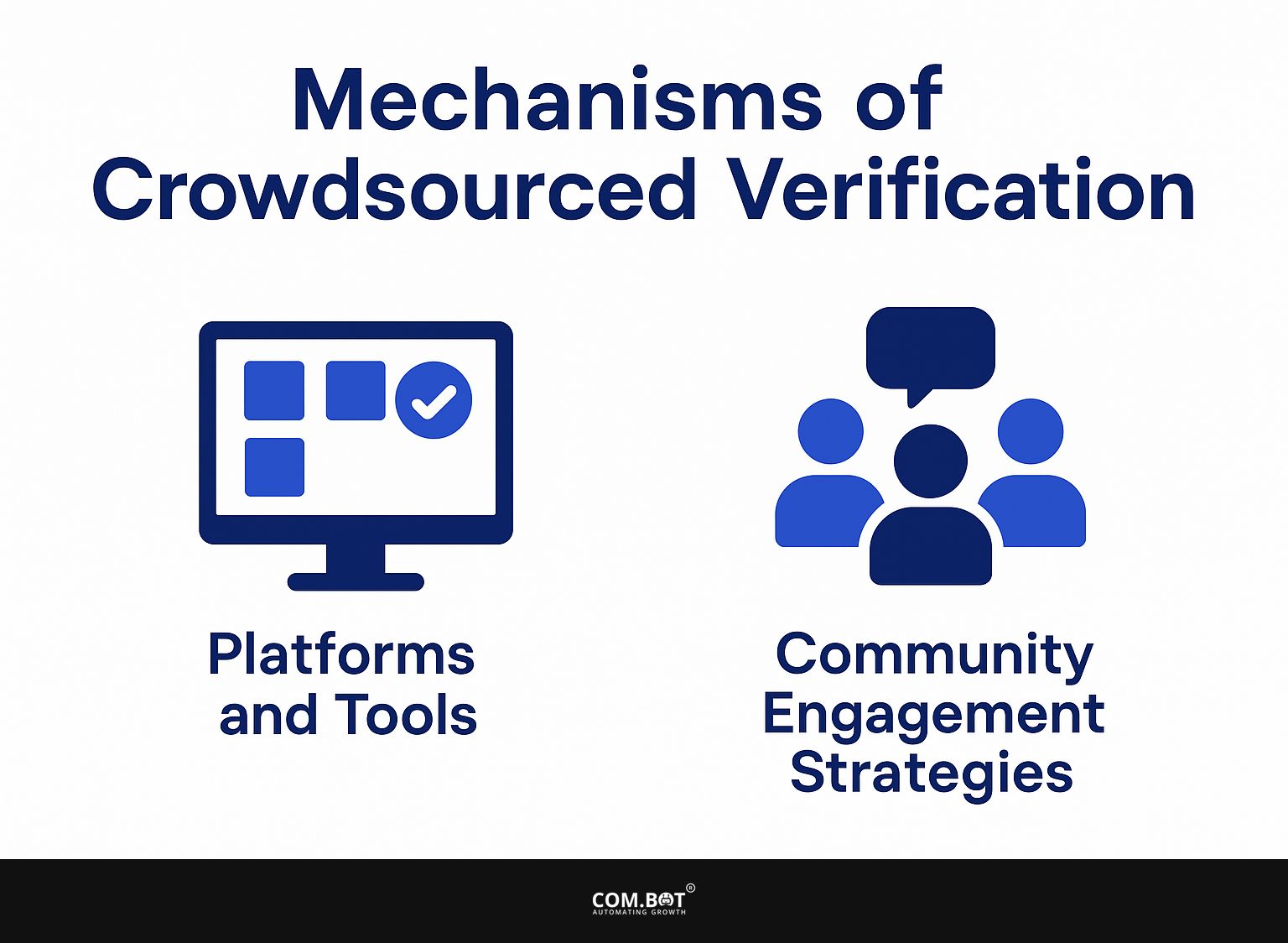
1. Platforms and Tools
Some platforms use tools that rely on users to verify information, like Facebook’s fact-checking efforts and Twitter’s Birdwatch program, encouraging people to get involved.
For instance, Facebook collaborates with independent fact-checkers, enabling users to flag misleading posts that are then reviewed for accuracy. This method promotes community participation and builds trust in the platform.
On the other hand, Twitter’s Birdwatch allows users to add context to tweets, which can be visible to additional viewers, promoting open dialogue.
Both platforms need strong strategies to keep users involved-Facebook focuses on being open about its actions, while Twitter encourages users to participate by giving points for correct evaluations. These methods improve misinformation management and give users more control.
2. Community Engagement Strategies
Good community involvement methods are important for successful crowdsourced verification projects, as they build involvement and confidence among users.
To increase user participation, think about these methods:
- Offer incentives, such as exclusive content or early access to features, which can motivate participation.
- Implement regular training sessions to improve digital literacy, equipping users with the skills needed for effective engagement.
- Create ways to collect opinions, such as surveys or forums, to quickly deal with issues.
For example, platforms like Wikipedia regularly update users based on feedback, ensuring the community feels heard and valued. By using these methods together, initiatives can build a strong and reliable setting for participation. One of our most insightful case studies demonstrates this principle with real-world results.
Efficacy of Crowdsourced Verification
Studies indicate that checking by a wide group of people can improve how correct information is.
Some platforms have reported that the accuracy of information has increased by up to 30%.
Crowdsourced Content Moderation Data
Crowdsourced Content Moderation Data
Content Moderation Metrics: Content Moderation Success Rates
Content Moderation Metrics: False Content Statistics
The Crowdsourced Content Moderation Data offers a detailed look at how well different content moderation methods work, highlighting how often they succeed, when human help is needed, and how much false content appears on platforms.
Content Moderation Metrics explain the accuracy and difficulties experienced by automated moderation tools. The data reveals a high 99.0% certainty in image moderation, underscoring the efficacy of algorithms in identifying inappropriate or harmful images. However, despite this high certainty, 60.0% of images require human review Algorithms are powerful, but human judgment is important for decisions that need understanding of specific situations.
- Similar trends are observed in text-based moderation, with 35.0% of comments needing human review. This statistic shows that while automated systems can block most bad content, human moderators are important for checking accuracy, especially in tough or unclear cases.
False Content Statistics focus on the prevalence of misleading or fraudulent content online. For instance, 1.5% of Craigslist posts are deemed false, indicating effective moderation yet showing room for improvement to protect users from scams. On platforms like Amazon, 40.0% of reviews are questionable, which raises concerns about consumer trust and the impact of fake reviews on purchasing decisions.
The data shows that using automated systems together with human supervision makes content moderation more reliable. Though algorithms are great at handling a lot of data fast, human moderators are important for dealing with unique cases and making sure the information is accurate in different situations.
Overall, the Crowdsourced Content Moderation Data highlights the necessity of ongoing development in moderation technologies and the strategic use of human moderators to manage and verify content effectively. This two-part method is essential for keeping trust and safety on different online platforms.
1. Case Studies and Success Stories
Several successful examples demonstrate how crowdsourced checking has effectively handled false information on various platforms.
For instance, the online platform Wikipedia employs a vast network of volunteers to fact-check and edit articles, significantly improving the accuracy of content with over 6 million active articles by 2023.
Another example is Snopes, which uses information from people to check urban legends and rumors, with tools like the Snopes Widget for immediate updates.
These partnerships increase transparency and motivate people to participate, with many users feeling proud to help address misinformation.
2. Challenges and Limitations
Despite its potential, crowdsourced verification faces challenges such as cognitive biases and the potential for misleading claims, which may impact its effectiveness. To counteract these challenges, it’s essential to implement structured review processes.
For example, using platforms like Kialo for argument mapping can help visualize the different views and evidence put forth. Setting clear rules for judging evidence helps reduce biases. Tools like the CRAAP test (Currency, Relevance, Authority, Accuracy, Purpose) offer a method for checking the quality of information.
Encouraging different people to take part through outreach helps bring in a range of views. For example, Wikipedia’s Edit-a-thons work to improve representation and correctness in their content.
Comparative Analysis
Examining crowdsourced verification against regular moderation shows specific pros and cons that affect how much users trust them.
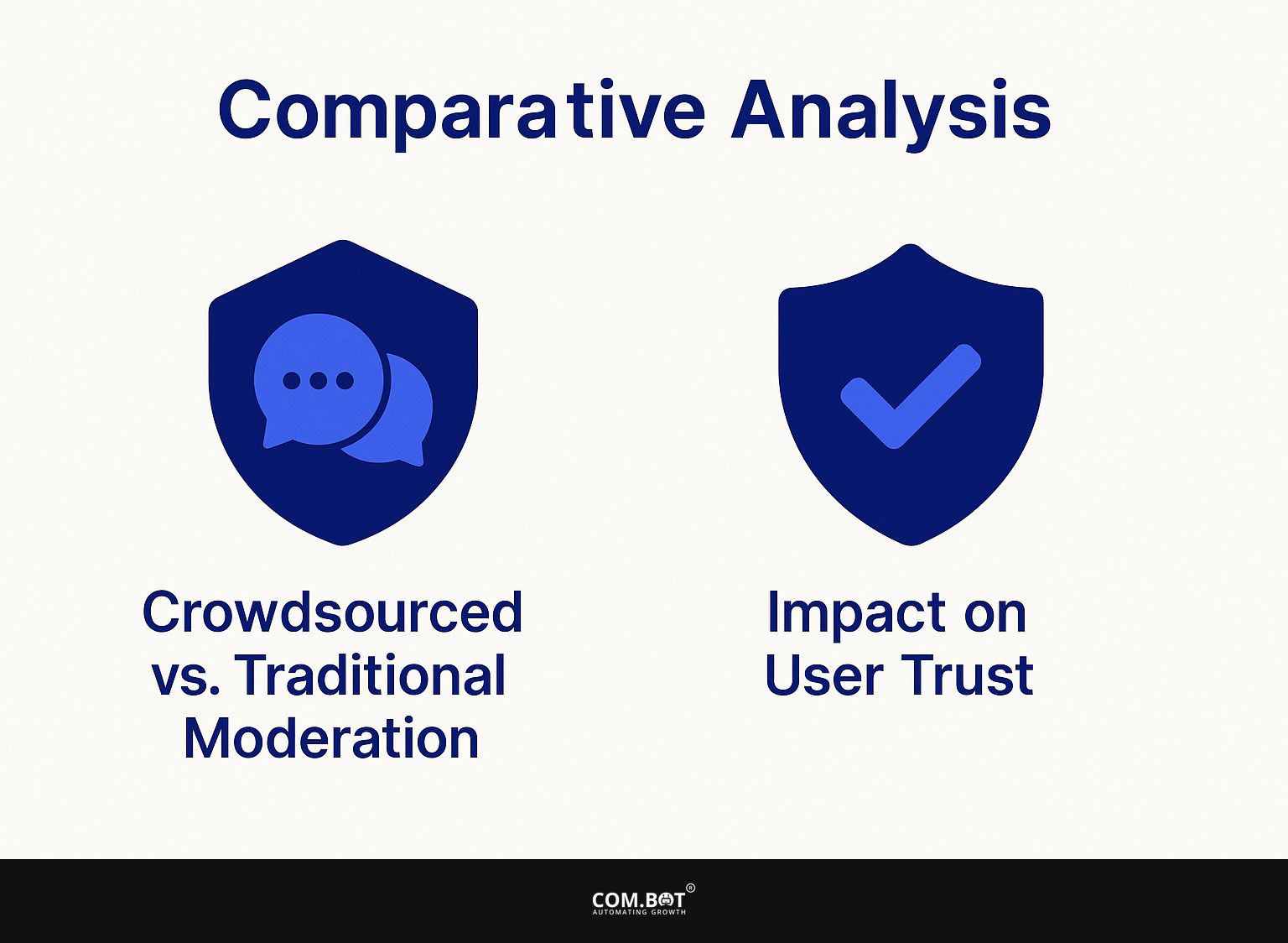
1. Crowdsourced vs. Traditional Moderation
Crowdsourced moderation uses feedback from the community, while traditional methods rely on a central authority. Both methods affect the accuracy of information in various ways. Crowdsourced moderation involves users marking false information, using different viewpoints to quickly spot it.
For example, platforms like Reddit rely on community voting to highlight misleading posts. This democratizes content control, but it can also lead to biased prioritization. In contrast, traditional moderation, seen on platforms like Facebook, employs trained teams to review content before it goes live.
While this method can maintain consistent accuracy, it often has difficulty expanding and can be slow to respond to new misinformation trends. The decision between these methods depends on whether you want faster results or steadier control.
2. Impact on User Trust
When people work together to confirm information, trust increases. This helps with community involvement and sharing correct details.
For example, platforms like Wikipedia and Reddit employ user contributions for verification, increasing reliability through collective oversight.
Studies indicate that users are 50% more likely to trust information when they see a strong record of community edits and comments. Tools such as Trustpilot encourage users to rate experiences, adding another layer of transparency.
To put these strategies into action, platforms should encourage users to take part and recognize their efforts, creating a space where contributors feel appreciated. This will increase trust and involvement overall.
Future Directions
The coming years for crowdsourced verification depend on new technology and ethical guidelines that focus on keeping users involved and ensuring high-quality information.
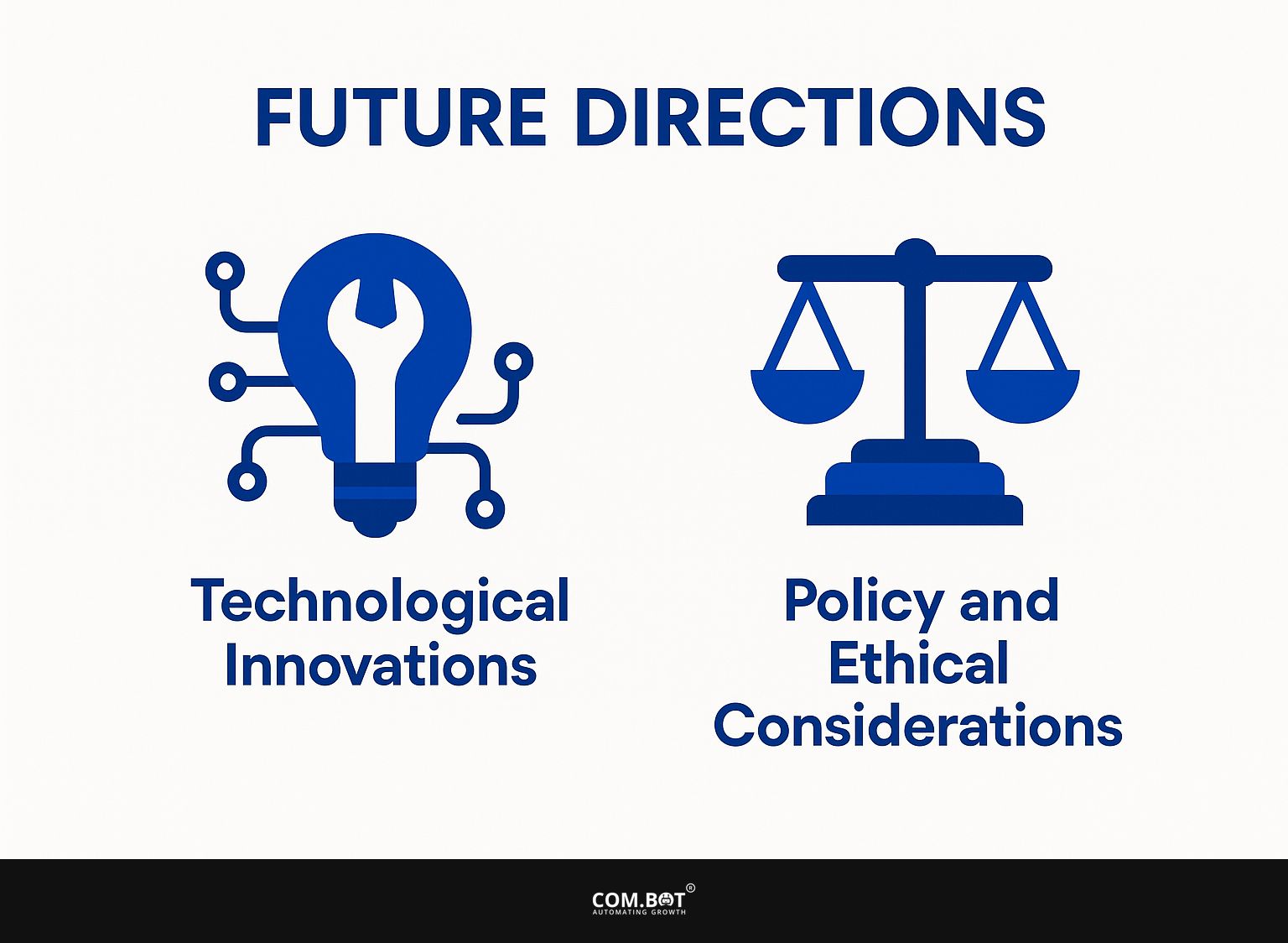
1. Technological Innovations
Emerging technologies such as machine learning and AI are revolutionizing crowdsourced verification, enhancing content accuracy and reducing misinformation.
Tools such as Google Fact Check Explorer quickly match statements to trusted sources using algorithms, showing any discrepancies to users. Similarly, platforms like Crowdtangle aggregate social media data to gauge the popularity and reliability of news articles.
Using neural networks like those in the Pheme project makes it possible to automatically evaluate how trustworthy content is by examining language details and surrounding information. By using these technologies, organizations can greatly increase the accuracy of information shared within their communities.
2. Policy and Ethical Considerations
Knowing the rules and ethics is important for effective crowdsourced verification, as it helps establish trust and accountability with users. To achieve this, implement clear guidelines that delineate acceptable practices for contributions.
For instance, developing educational nudges can effectively guide users on how to verify information responsibly. Use tools like Google Forms to gather feedback, making sure user responses are simple and clear.
Consider integrating a rating system, allowing users to evaluate the credibility of content sourced from others. This approach encourages people to participate responsibly and helps create a group effort to share more accurate information.
Frequently Asked Questions
1. What is crowdsourced verification in content moderation?
Crowdsourced verification in content moderation means using a group of people, usually from different backgrounds, to check if online content is correct and suitable. This can include fact-checking, identifying fake news or hate speech, and ensuring compliance with community guidelines.
2. How does crowdsourced verification work?
Crowdsourced verification means splitting a big job, like checking a lot of content from users, into smaller tasks that a group of people can do. These individuals are typically recruited through online platforms and are provided with guidelines and tools to help them verify the content effectively.
3. What is the efficacy of crowdsourced verification in content moderation?
Studies have shown that crowdsourced verification can be highly effective in identifying and removing inappropriate or misleading content, with a success rate of over 90%. This approach also allows for a faster and more efficient moderation process, as it distributes the workload among a large group of people.
4. What are the benefits of using crowdsourced verification in content moderation?
When people from various backgrounds and cultures help check content, it allows for a wider range of views and thoughts. This can help reduce bias and make content assessment more accurate.
5. Are there any risks associated with crowdsourced verification?
As with any online activity, there are potential risks associated with crowdsourced verification, such as the spread of false information or the potential for malicious users to manipulate the system. But, these risks can be reduced by setting clear rules and checking quality thoroughly.
6. How common is the use of crowdsourced verification in content moderation?
Crowdsourced verification is becoming increasingly common among social media platforms and online communities as a way to manage the large volume of user-generated content. It is also being used in other industries, such as e-commerce, to verify product reviews and ratings.
